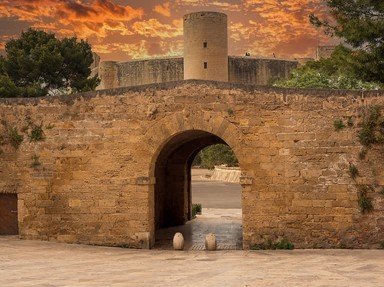Quiz Answer Key and Fun Facts
1. The Great Wall looms large in the popular image of China and is a staple of tourist itineraries. Which American statesman offered the following comment when he visited the Wall?
"When one stands there and sees the Wall going to the peak of this mountain and realizes that it runs for hundreds of miles, as a matter of fact thousands of miles, over the mountains and through the valleys of this country, that it was built over 2,000 years ago, I think that you would have to conclude that this is a great wall and that it had to be built by a great people."
2. The Great Wall also looms large in the Chinese imagination. Which famous versifier included the following line in one of his poems?
"If we fail to reach the Great Wall we are not real men."
3. The Great Wall has some negative connotations, too. According to the most prevalent version of the legend, the tears of Lady Meng Jiangnü caused a section of the Wall to collapse, exposing what?
4. Now that we've established the importance of the subject, let's move on to consider its dimensions. Size does matter, since humble huts are seldom accorded recognition as World Sites. In 2009 China's State Administration of Cultural Heritage and State Bureau of Survey and Mapping announced that the Great Wall is 8,850 kilometers long. What is problematic about this figure?
5. The Great Wall is not just very long, but also very old. It was created by order of China's First Emperor, Qin Shi Huang, shortly after 221 BC and combined earlier but discontinuous frontier walls into a single defensive system. The earliest versions of the Great Wall were built mainly of what material?
6. Today some sections of the Great Wall are still very impressive and attract millions of visitors each year. Which of these locations is NOT a touristed section of the Wall near Beijing?
7. Some strange names are associated with the Great Wall and its history. What, for example, is "Old Dragon Head"?
8. Going in the opposite direction, we eventually reach the fortress of Jiayuguan (in Gansu Province) which has traditionally been regarded as the western terminus of the Great Wall. There is a story that when the fortress was constructed the builder ordered only as many bricks as he calculated he would need. When the job was finished, how many bricks were left over?
9. There are also some modern legends about the Great Wall. Which of these individuals bears NO responsibility for the widespread belief that the Wall is visible from the Moon?
10. Which of these is a perfectly good literal translation of the Chinese words "chang cheng" - usually translated into English as "The Great Wall"?
Source: Author
Guiguzi
This quiz was reviewed by FunTrivia editor
stedman before going online.
Any errors found in FunTrivia content are routinely corrected through our feedback system.

